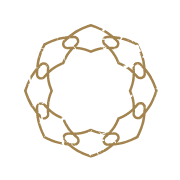Don’t Be Afraid of Tension
In the world of movement, mobility, and strength training, there's a fundamental concept that often gets overlooked by beginners and even some seasoned lifters: tension.
It seems counterintuitive—how can stiffness or tension be a good thing when learning how to move better? When you think of tension, you might think of being tight or in pain. The reality is, though, that tension is arguably the most important concept in all of movement. It’s not necessarily about being tense, but understanding how to organize tension in an efficient way.
What is Tension?
Tension, in the context of our training, refers to the deliberate engagement of muscles throughout a movement. It's not just about lifting a weight from point A to point B—it’s about how you control that weight and the sensations and intentions involved in the process. This means creating a full-body connection where you’re consciously activating the muscles that stabilize and power the movement.
Why Tension Matters
Muscle Activation: Proper tension ensures that the target muscles are fully engaged. For example, in a deadlift, creating tension in your lats, core, and glutes before you even lift the bar primes your body to perform the movement efficiently. Without this, you might lift the weight, but you’re missing out on the opportunity to build strength where it counts.
Stability and Strength: Tension stabilizes the joints and protects them from unnecessary strain. By bracing your core during a squat or a press, you’re reducing the risk of lower back injuries. The same goes for maintaining tension in your shoulders during a pull-up—you’re safeguarding those joints while enhancing your performance.
Better Movement Patterns and Awareness: When you focus on tension, you’re also refining your movement patterns. This conscious engagement teaches your body to move more efficiently, which translates into better technique and, ultimately, better results. Again, using the example of a deadlift, when I feel my upper back, the backs of my legs, and core, I know that I am being as efficient as possible with the movement. When I feel my lower back, I know I am not engaging in an optimal way. Learning where you want the tension and how to create it really helps with body awareness.
Increased Mobility: Tension isn't just about lifting more weight. It’s about learning how to engage and stabilize. Oftentimes, when trying to move with fluidity, we focus too much on what is moving versus what is not moving. However, it is often the stability of a movement that allows you to have greater reach and range in the moving limb. It is tension that allows for this stability.
How to Create Tension
Creating tension is a skill, just like all other movement concepts, that can be refined with practice:
Start with the Basics: Focus on engaging your core, squeezing your glutes, and activating your lats during compound movements. These simple cues can make a world of difference in how you feel during a lift.
Slow Down the Movement: By slowing down, you can feel where you might be losing tension. Control the eccentric (lowering) phase of the lift, and don't rush through the concentric (lifting) phase.
Breathing Techniques: Learning how to breathe correctly—like using the Valsalva maneuver during heavy lifts—can help you maintain tension and stabilize your body.
Practice Mind-Muscle Connection: Be mindful of the muscles you're working on during each exercise. Visualizing the muscle contracting can help you engage it more effectively, even if you can’t feel it just yet!
In strength training, tension isn't just a concept—it’s a tool that can take your training to the next level. Whether you're a beginner or a seasoned trainee, mastering tension will unlock new potential in your training, increase your efficiency, and decrease the wear and tear on the body as we age. So next time you step into the gym, remember: it’s not just about moving the weight—it’s about how you move it!
